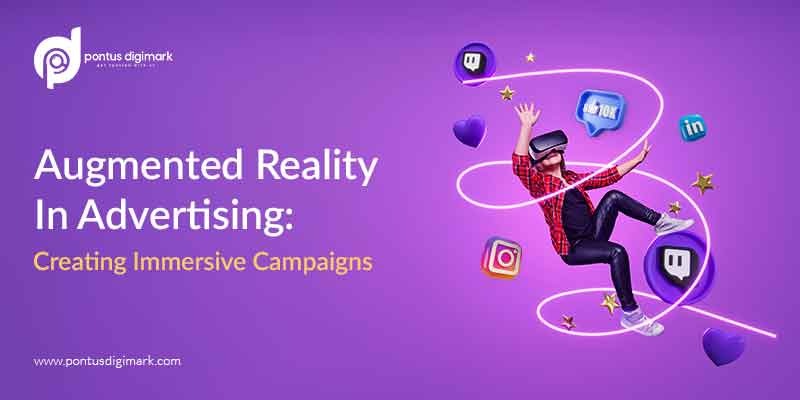Brands are looking to stay ahead of the curve and capture the attention of their target audience through advertising. Augmented Reality (AR) is one of the popular tools that has emerged in recent years to revolutionize advertising. With an increasing number of people owning smartphones and AR-capable devices, the adoption of AR in advertising has skyrocketed. This blog explores the myriad ways AR is reshaping advertising campaigns, creating immersive experiences, simplifying processes, and fostering stronger connections with consumers.
The Rise of AR in Advertising:
As of 2023, a staggering 85.74% of the world’s population owns a smartphone. This adoption of AR-capable devices has propelled the use of Augmented Reality in advertising, turning it into a mainstream tactic for brands, and allowing consumers to become active participants in advertising campaigns. The ability of AR to merge digital elements seamlessly with the real world has opened up a realm of possibilities for advertisers, enabling them to engage audiences in unprecedented ways.
Augmented Reality (AR) in advertising is helping create immersive campaigns by providing unique and memorable experiences, simplifying processes, and building relationships with target audiences. Some of the ways AR is being used in advertising include:
Immersive and Interactive Experiences:
One of the primary strengths of AR in advertising lies in its capacity to create immersive and interactive experiences. By superimposing digital elements like images, animations, information, and sound onto the real-world environment through devices such as smartphones, AR transforms advertising into a two-way interaction between the brand and the consumer. This dynamic engagement not only captures attention but also makes the audience an active participant in the advertising narrative.
Virtual Product Fittings:
AR advertising has revolutionized the way consumers shop for products like clothing, furniture, and home goods. Through virtual product fittings, users can now “try on” items in the comfort of their homes using their smartphones. This not only enhances the shopping experience but also leads to increased sales and reduced product returns, as customers gain confidence in their purchase decisions.
On-Demand Experiences:
AR is proving to be a game-changer in creating on-demand experiences that seamlessly integrate content with programming. For instance, imagine watching a reality dating show where, before and after voting on matchups, users are presented with immersive AR advertisements. This innovative approach not only captivates viewers but also ensures that advertising is seamlessly integrated into the overall entertainment experience.
Valuable Applications of AR:
Beyond traditional advertising, AR finds valuable applications in gaming, location-specific augmented reality, and full product demonstrations. Brands are leveraging AR to create engaging and memorable experiences that go beyond the limitations of conventional advertising. Whether it’s exploring a virtual world, unlocking location-based content, or providing in-depth product demonstrations, AR adds a new dimension to brand communication.
Success Stories in AR Advertising:
Several successful AR advertising campaigns have demonstrated the potential of AR in creating engaging experiences, increasing sales, and attracting new customers, serving as testimonials to the effectiveness of this technology. Brands that have embraced AR have witnessed increased consumer engagement, boosted sales, and a broader reach. These success stories underscore the potential of AR in creating impactful advertising campaigns that resonate with modern, tech-savvy audiences.
In conclusion, Augmented Reality in advertising is not just a trend but a transformative force reshaping the way brands connect with their audience. The immersive and interactive experiences offered by AR create lasting impressions, turning passive consumers into active participants in advertising campaigns. As technology continues to advance and costs decrease, AR is expected to become an integral part of the advertising toolbox, providing brands with innovative ways to captivate, connect, and convert their target audience. The future of advertising is here, and it’s augmented.







